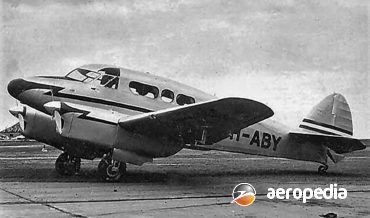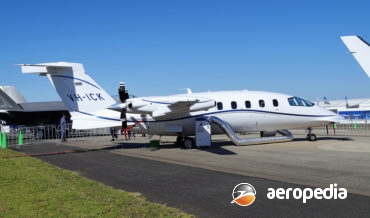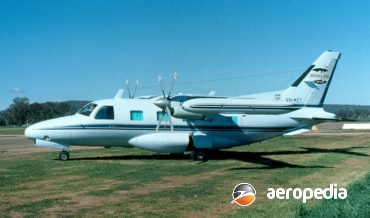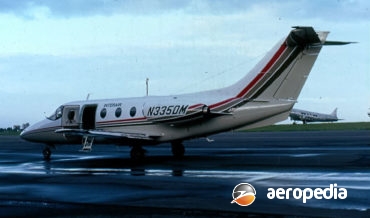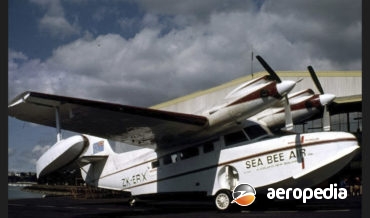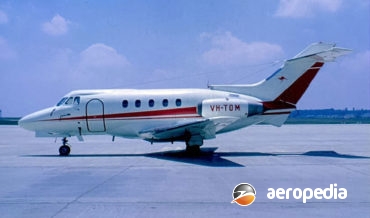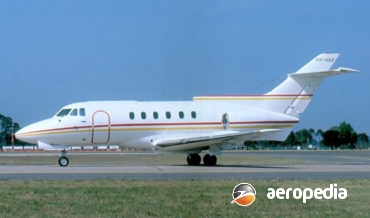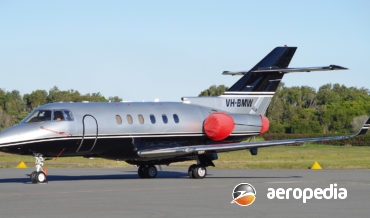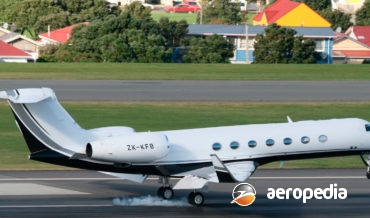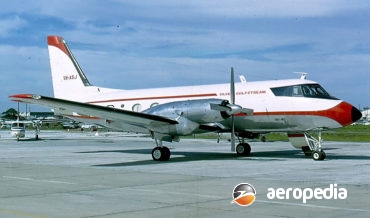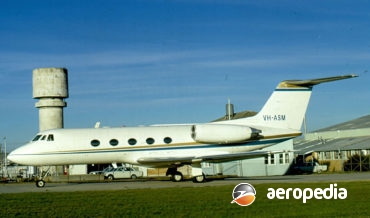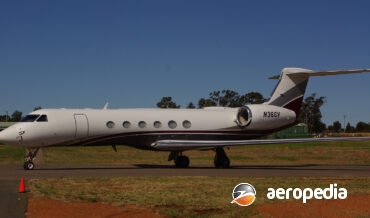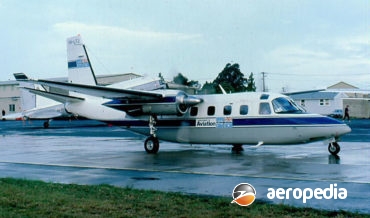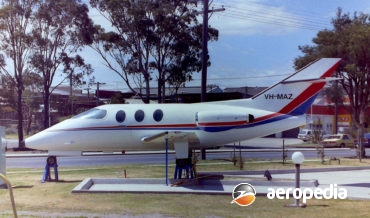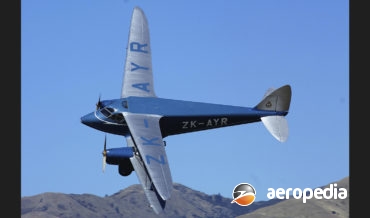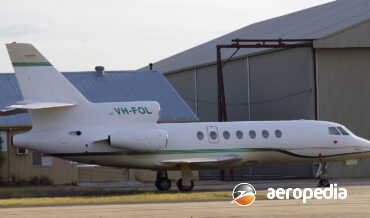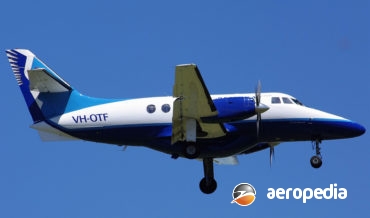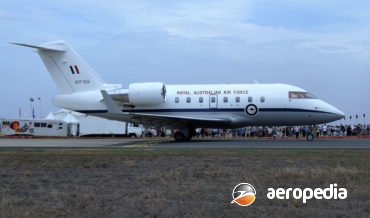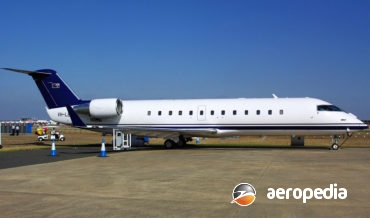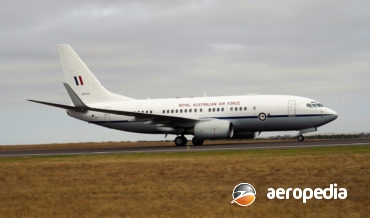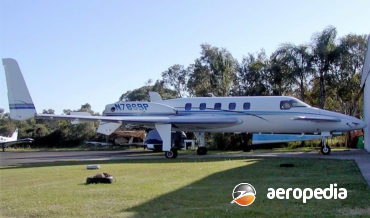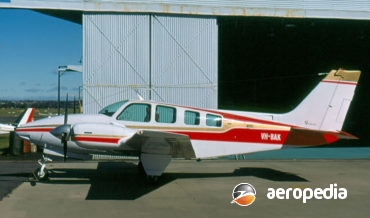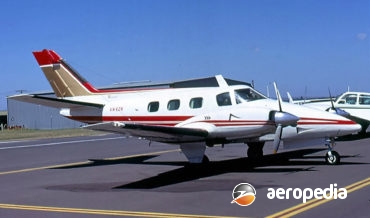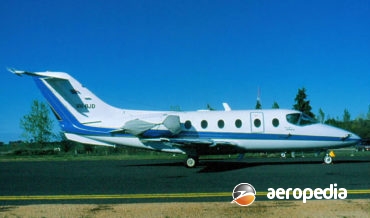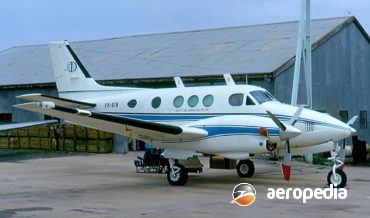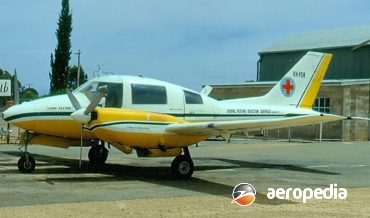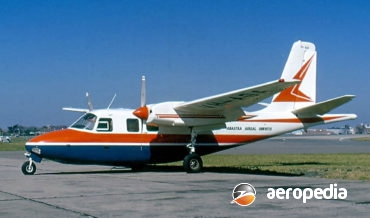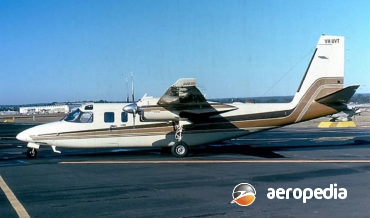All Contents
Contents
The Percival Q.6 was designed by Edgar Percival in about 1937 as a twin-engine monoplane with accommodation for four passengers in executive comfort and a crew of two powered by two Gipsy Six engines.
David C. Eyre
- May 8, 2019
The Avanti is of unusual design and is a mid-wing, three flying-surface aircraft designed to provide minimal drag and fuel consumption at the speed of a jet aircraft, keeping the main spar and engines behind the cabin to reduce noise and with a roomy cabin with good internal space and
David C. Eyre
- May 8, 2019
In 1972 Piper added the PA-31-350 Navajo Chieftain to its range. The overall length had been increased by 0.61-m (2-ft), thus allowing for a 20-percent increase in overall cabin volume to provide accommodation for up to nine passengers plus the pilot in a commuter/charter aircraft role.
David C. Eyre
- May 8, 2019
The first design of the famous Mitsubishi company to enter production (in notable quantity) after the completion of hostilities in World War II, the MU-2 was designed as a general-purpose light transport which could be used by military operators, as a small airliner, for cargo, or as an executive transport.
David C. Eyre
- May 8, 2019
Following the success of the MU-2 series, Mitsubishi in 1977 embarked on the design of a new business jet known as the MU-300, this being a conventional low-wing aircraft with a T-tail powered by two Pratt & Whitney JT-15D turbofans mounted on the rear fuselage
David C. Eyre
- May 8, 2019
The history of the Grumman Goose is dealt with elsewhere and need not be dealt with in any detail here.
David C. Eyre
- May 8, 2019
Known for a short time as the ‘Jet Dragon’, the DH-125 later became known as the HS-125 when the merger of several British aircraft companies occurred.
David C. Eyre
- May 8, 2019
The Series 600 was introduced to the market in 1971 and was powered by two 3,750 lbst Viper 600 series engines with a two-stage turbine.
David C. Eyre
- May 8, 2019
The de Havilland DH-125 series was intended as a jet-engined replacement for the de Havilland DH-104 Dove executive aircraft, the project being announced in February 1961.
David C. Eyre
- May 8, 2019
Over the years development of the series continued, one variant being the Series 900XP which was a model which combined the airframe, operating weights and systems of the 850XP model, including the winglets, but which was fitted with the new Honeywell TFE731-50R turbofan which provided a five percent reduction in
David C. Eyre
- May 8, 2019
Once the Hawker 800 series was placed in production British Aerospace looked at a further development of the type and, despite being the most capable model of all the various models, only 52 examples were completed.
David C. Eyre
- May 8, 2019
In 2008 Gulfstream announced it was going to introduce a new long-range business aircraft known as the 650 to fill a niche in the corporate market between the company’s own G550 and the Bombardier Global XRS, and the Boeing Business Jet and Airbus Corporate Jetliner.
David C. Eyre
- May 8, 2019
In 1956 Grumman set out to produce a long-range transport capable of operating to airline standards to replace the large number of Douglas DC-3s and similar types serving as business and executive aircraft in the USA.
David C. Eyre
- May 8, 2019
In May 1965 Grumman Aerospace launched a successor to the Gulfstream I powered by Rolls Royce Spey turbofans, this becoming known as the Gulfstream II.
David C. Eyre
- May 8, 2019
Following the success of the Gulfstreams II and III Grumman introduced the Model IV, of which 340 examples were built in two basic models, the G-IV and G-IV-SP, examples of which were supplied to the US military services as the C-20.
David C. Eyre
- May 8, 2019
The prototype of the Series 1000 (or 695B) was flown for the first time on 12 May 1980 and deliveries of production aircraft began in July of the following year.
David C. Eyre
- May 8, 2019
Gulfstream Aerospace Corp was founded in 1958 and is a wholly owned subsidiary of General Dynamics.
David C. Eyre
- May 8, 2019
To increase the performance and load carrying capacity of what was becoming an old flying boat, a number of persons and organisations looked at replacing the engines and equipment in the Mallard, one of these being Mr R Peterson of Northern Consolidated Airlines in the US, he having obtained c/n
David C. Eyre
- May 8, 2019
The Foxjet was developed in the 1970s by Foxjet International as a small business jet half the size of a Learjet, able to operate from grass-strips, and with low operating costs
David C. Eyre
- May 8, 2019
The genesis of the DA-42 commenced in 1981 when the then Austrian-based company, Diamond Aircraft Industries, produced a series of gliders and has continued over the years to produce the DA-20, DA-40 and DA-42 series, these being very distinctive aircraft in having long high-aspect ratio wings, winglets, and a tapered
David C. Eyre
- May 8, 2019
The Dragonfly, the prototype of which (E-2 c/n 7500 – later G-ADNA) was first flown on 12 August 1935, was designed as a twin-engine business and executive transport seating five.
David C. Eyre
- May 8, 2019
The Falcon 50 was a larger development of the Mystere/Falcon 20 series of business and executive aircraft
David C. Eyre
- May 8, 2019
The story of the Jetsteam goes back to 1965 when Handley Page designed the HP-137 Jetstream business aircraft powered by two 634-kw (850-eshp) Turbomeca Astazou XIV turboprops, the prototype of which was flown for the first time on 18 August 1967.
David C. Eyre
- May 8, 2019
The Challenger 600 series of business aircraft has been produced since 1986 by Canadair, a division of Bombardier Aerospace, the aircraft previously being known as the Canadair Challenger.
David C. Eyre
- May 8, 2019
The Challenger 850 series of corporate aircraft was launched by Bombardier in May 2005, and is a development of the CRJ200 airliner.
David C. Eyre
- May 8, 2019
With some 5,000 examples of the Boeing 737 series delivered, and by late 2005 some further 1,000 on order, the 737 has been the most commercially successful airliner and, with development continuing, it was highly likely that the Company would look at providing a business-jet version.
David C. Eyre
- May 8, 2019
The Starship project was revealed to the aviation industry at the NBAA Convention in 1983 shortly after the 85-percent proof-of-concept aircraft was flown at Mojave.
David C. Eyre
- May 8, 2019
The first of two prototypes of the Series 200 Beech King Air executive aircraft flew for the first time on 27 October 1972, the second following on 15 December of that year.
David C. Eyre
- May 8, 2019
In 1970 the larger Model 58 joined the Beech range, the prototype flying for the first time in June 1969.
David C. Eyre
- May 8, 2019
Designed to fill the gap between the Beech Baron and the Beech Queen Air in the Beechcraft range, the Model 70 Duke, when it first appeared, was the cheapest fully-pressurised four/six-seat high-performance aircraft with turbocharged engines.
David C. Eyre
- May 8, 2019
After the success of the MU-2 series, Mitsubishi decided to proceed further into the world of light executive transports and designed the MU-300 Diamond, two prototypes of which were built, the first flying on 29 August 1978.
David C. Eyre
- May 8, 2019
The prototype King Air (N5690K), known as the Beech 65-90, was flown for the first time on 20 January 1964.
David C. Eyre
- May 8, 2019
The first large twin-engine aircraft built by the Beechcraft Corporation, the Queen Air series of aircraft was introduced to the company’s range in 1958.
David C. Eyre
- May 8, 2019
The prototype of the Beech 18 series flew for the first time on 15 January 1937.
David C. Eyre
- May 8, 2019
The Beech Baron series was developed by the Beechcraft Corporation as a successor to the Travel Air and Twin Bonanza series.
David C. Eyre
- May 8, 2019
The Beagle 206 series of aircraft was manufactured in the United Kingdom during the 1960s for both civil and military use, and was known as the Basset CC-1 in service with the RAF, having beaten the de Havilland Dove for the RAF order.
David C. Eyre
- May 8, 2019
Aero Design and Engineering Co, which was formed in December 1944 in Culver City, California, by two Former Douglas Aircraft Co employees, produced an aircraft known as the Aero Commander L-3805.
David C. Eyre
- May 8, 2019
After production of the initial version of the Aero Commander series stopped, the Models 520 and 560 appeared in 1954, powered by two 209-kw (280-hp) Lycoming GO-480-B engines. These introduced a few degrees of sweep angle on the vertical tail surfaces.
David C. Eyre
- May 8, 2019
The Aero Commander 840, also known as the Rockwell Commander 690C Jetprop 840, is a development of the 690 series with turboprops, being produced alongside the 980 at Rockwell International’s General Aviation Division, at this time the company concluding production of piston-engined aircraft.
David C. Eyre
- May 8, 2019
Recent Comments
Archives
Categories
- No categories
Categories
- No categories
Latest Posts
Newsletter

